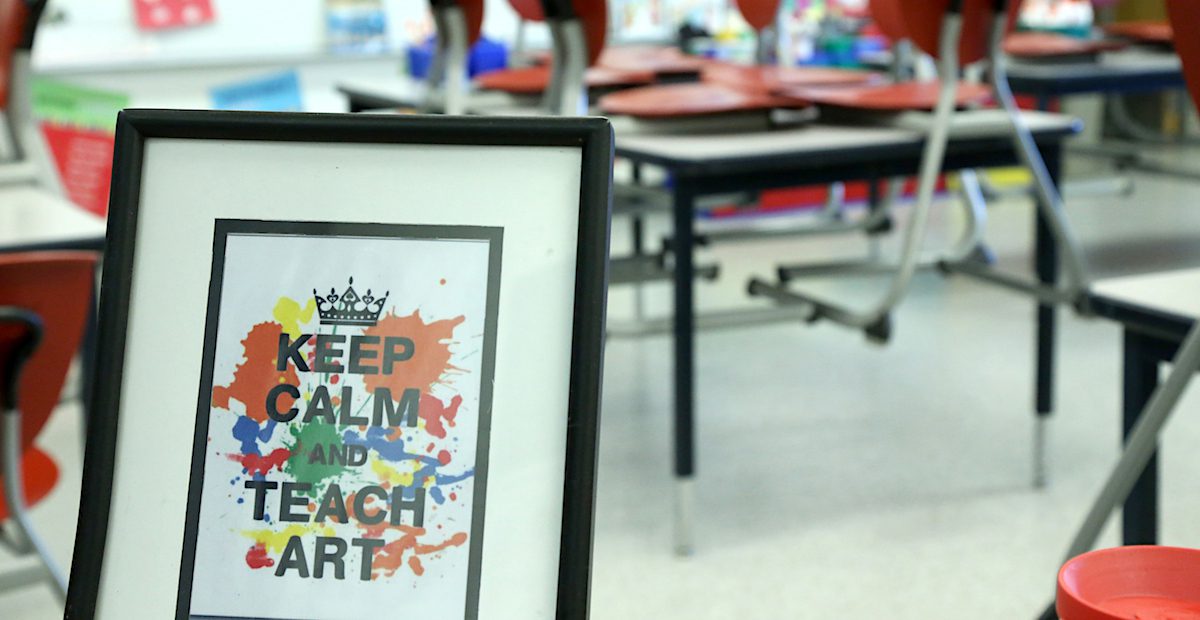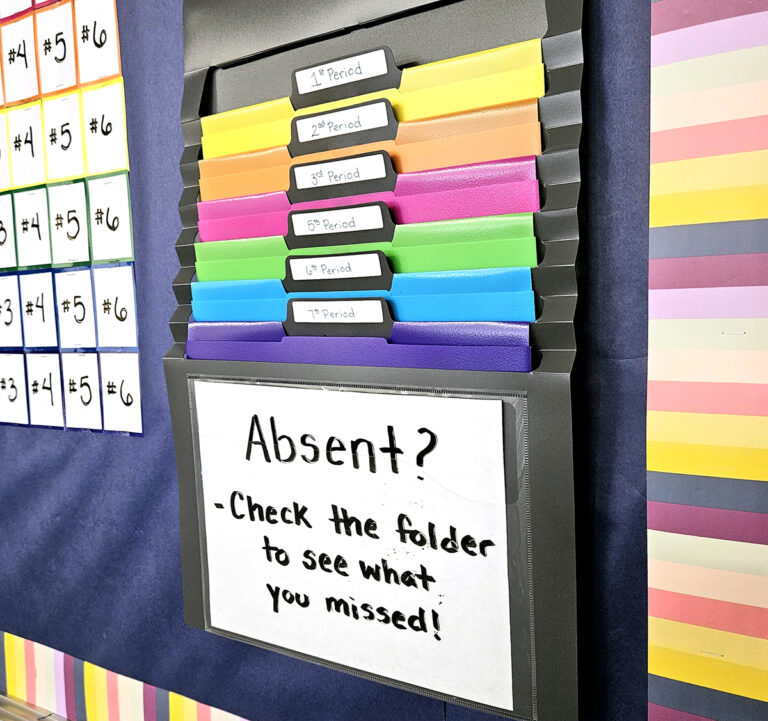It’s no secret that transition times in the art room are tricky. Without specific instructions, students can be confused about expectations. Having clear routines and strategies is key.
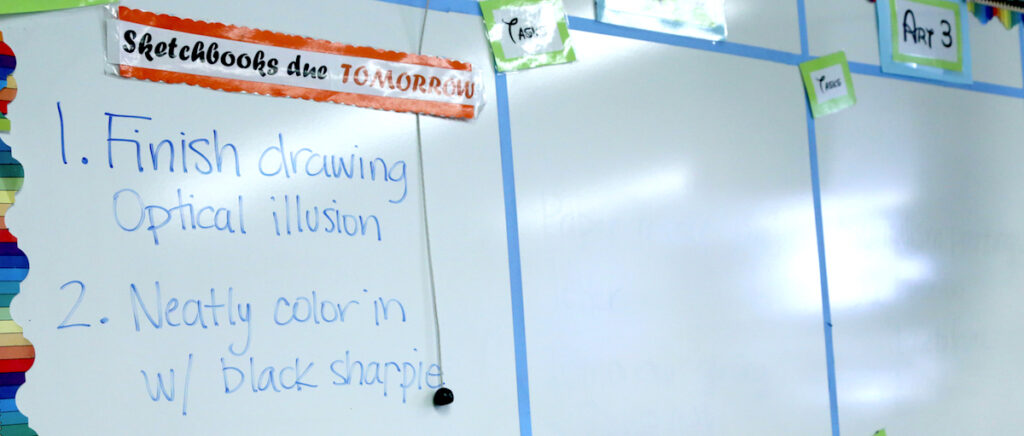
I recently learned an awesome strategy, called narrating, to help my students with transitions in the art room. I’m always looking to improve my management skills so when a wonderful, wise colleague told me about this strategy, I was hooked. She happened to be teaching a course on classroom management using the text, Classroom Management for Academic Success by . This book contains many helpful management strategies and tips.
So, what is narration?
Narration is the act of describing what you see out loud. In the classroom, it looks like this.
- After giving directions, IMMEDIATELY begin to monitor your class. (This means within a few seconds.)
- Look for students who are exhibiting expected behaviors, and following the directions you just gave.
- Then simply narrate, or describe, what you see those students doing.
Generally, there are no additional words or praise used with the narrated statements. There is no “I like how…” or “I noticed that…”. Narrated statements simply describe students performing the expected tasks.
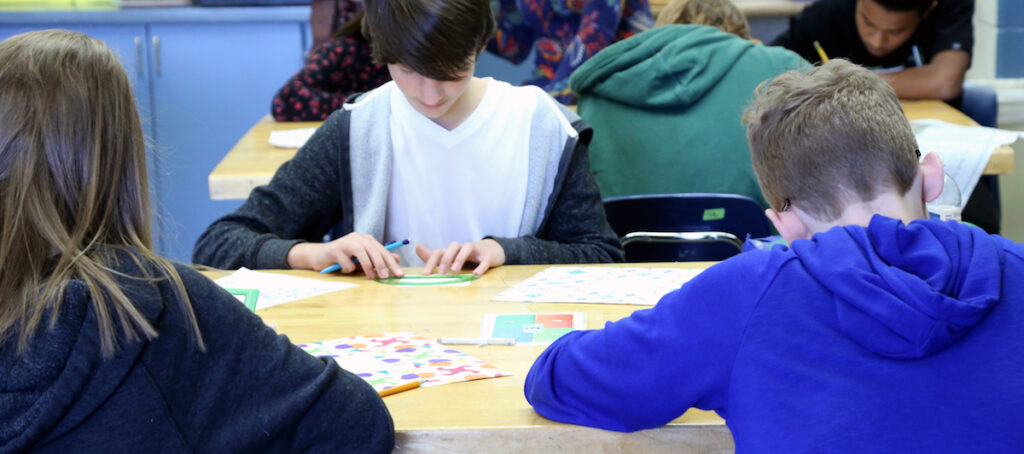
Why is narration important?
Narration calls attention to expected behaviors. It motivates students to follow directions and stay on task. It also reinforces positive behaviors in a nonjudgmental manner because you are simply stating what you observe. As an added bonus, it gives you the opportunity to repeat directions in a positive way!
Why does it work?
Narration works because it sets a positive tone. It motivates students by providing neither corrective or negative feedback. Plus, it shows your students you are paying attention to their actions and behavior.
After learning about this strategy, I tried it in my classroom the very next day. I was astounded by the number of students who followed directions the first time they were given. Students actually began tasks more quickly and stayed on task for longer periods of time.
For example, I often ask students to show me a silent thumbs-up when they’re ready for the next step. My youngest students began to get their thumbs up right away, eagerly trying to get my attention so I would list their name as ready to go. I simply say, “Jack is showing me a thumbs-up, and is ready to go.”
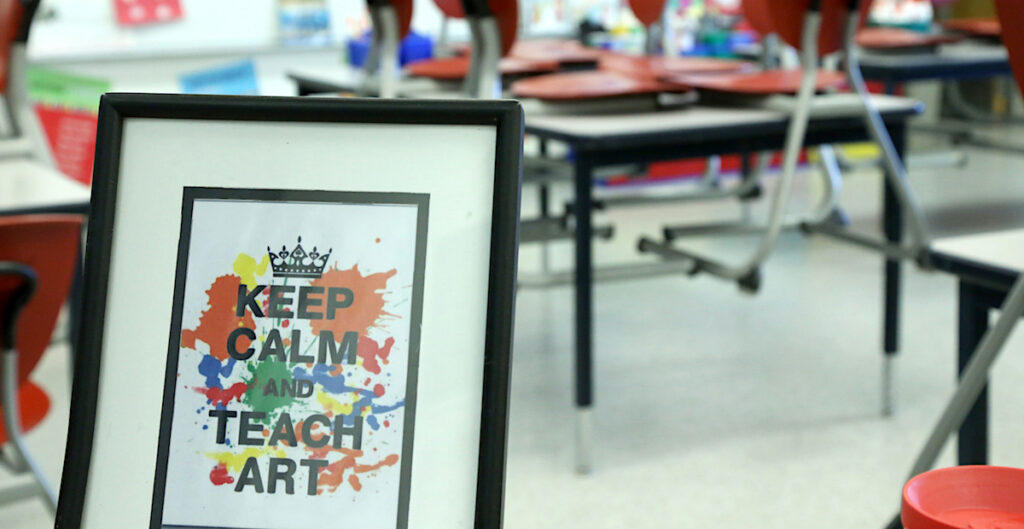
How could I use this strategy in the art room?
Here is an example of what narration might sound like at the beginning of class.
You might say, “When I say ‘Go,’ I want everyone to walk quietly back to their seats, get their sketchbooks out, and have a pencil ready. I’ll be looking for students who are following my directions. Go!”
Then, immediately begin to describe students who are performing the expected tasks. Try to describe the behavior of at least three students.
“Sophie is walking to her seat silently.”
“Drake is finding a blank page in his sketchbook.”
“Max has a pencil ready.”
“Josie walked to her seat, got out her sketchbook and pencil, and is sitting quietly.”
This also works for more complex tasks requiring multiple steps. Tasks and routines like gathering paint materials or cleaning up. As mentioned above, narrating helps you to repeat and communicate directions. It reminds your students of expected behaviors.
It might sound like: “When I say ‘Go,’ please quietly gather the materials listed on the board, then begin painting when you get back to your seat. I’ll be looking for students who are gathering materials quickly and quietly. Go!”
“Luke has grabbed a mat and put it at his seat.”
“Tamara is carefully filling her water cup.”
“Sam got his brush, and is getting a paper towel.”
“Jordan is checking the list on the board to see if she got all her supplies.”
“Marco has each of his supplies and has started working quietly.”
If you think specific students might feel uncomfortable being singled out, you may want to call attention to groups versus individual students. For example, “The red table has all their materials and has gotten to work quietly.” Or, “The blue table is silently showing me they’re ready for the next step.”
Narrating can do wonders for those tricky transition times. But, narrating isn’t just for transitions. You can use it to help students stay on task with statements like, “Evan, Jared, and Natalia are sharing materials and working quietly.” By narrating throughout class, you communicate to your students that you are aware of their behavior. And, you communicate the expectations in a positive way. Like many new strategies and routines, it can take some getting used to for these statements to come naturally. But once you get the feel for narrating, it can do wonders for your classroom climate and time devoted to on-task, authentic learning and creating.
Whether you’d like more strategies for transitions or have other classroom management struggles you’d like to work on, you’ll find answers in AOE’s Course, Managing the Art Room. Throughout the course, you’ll be able to explore solutions to use in your classroom right away!
How do you remind students to stay on task?
What are your best strategies for helping students transition in the art room?
Magazine articles and podcasts are opinions of professional education contributors and do not necessarily represent the position of the Art of Education University (AOEU) or its academic offerings. Contributors use terms in the way they are most often talked about in the scope of their educational experiences.
